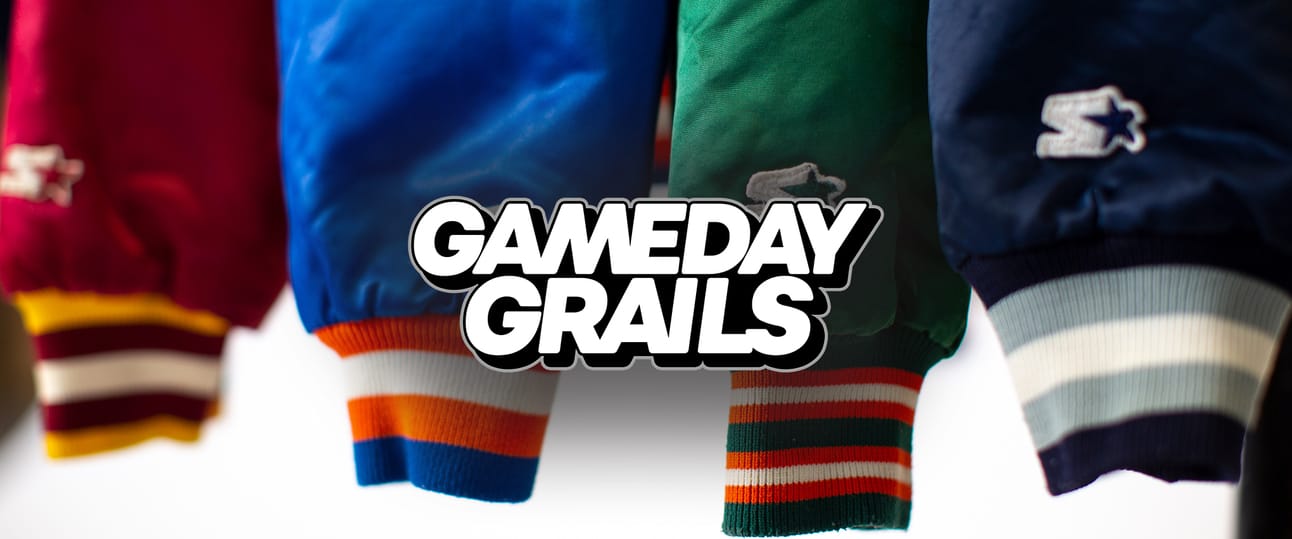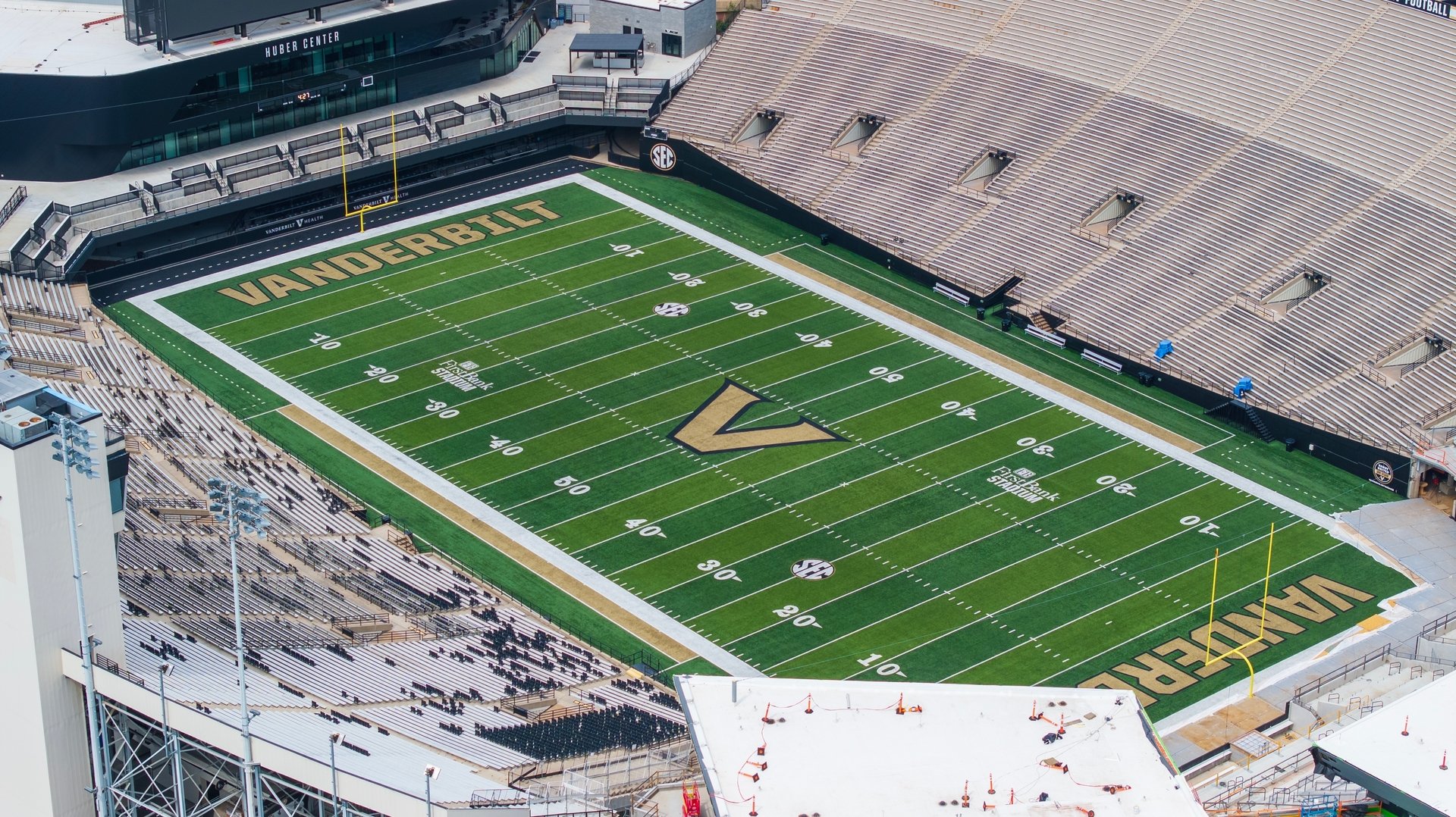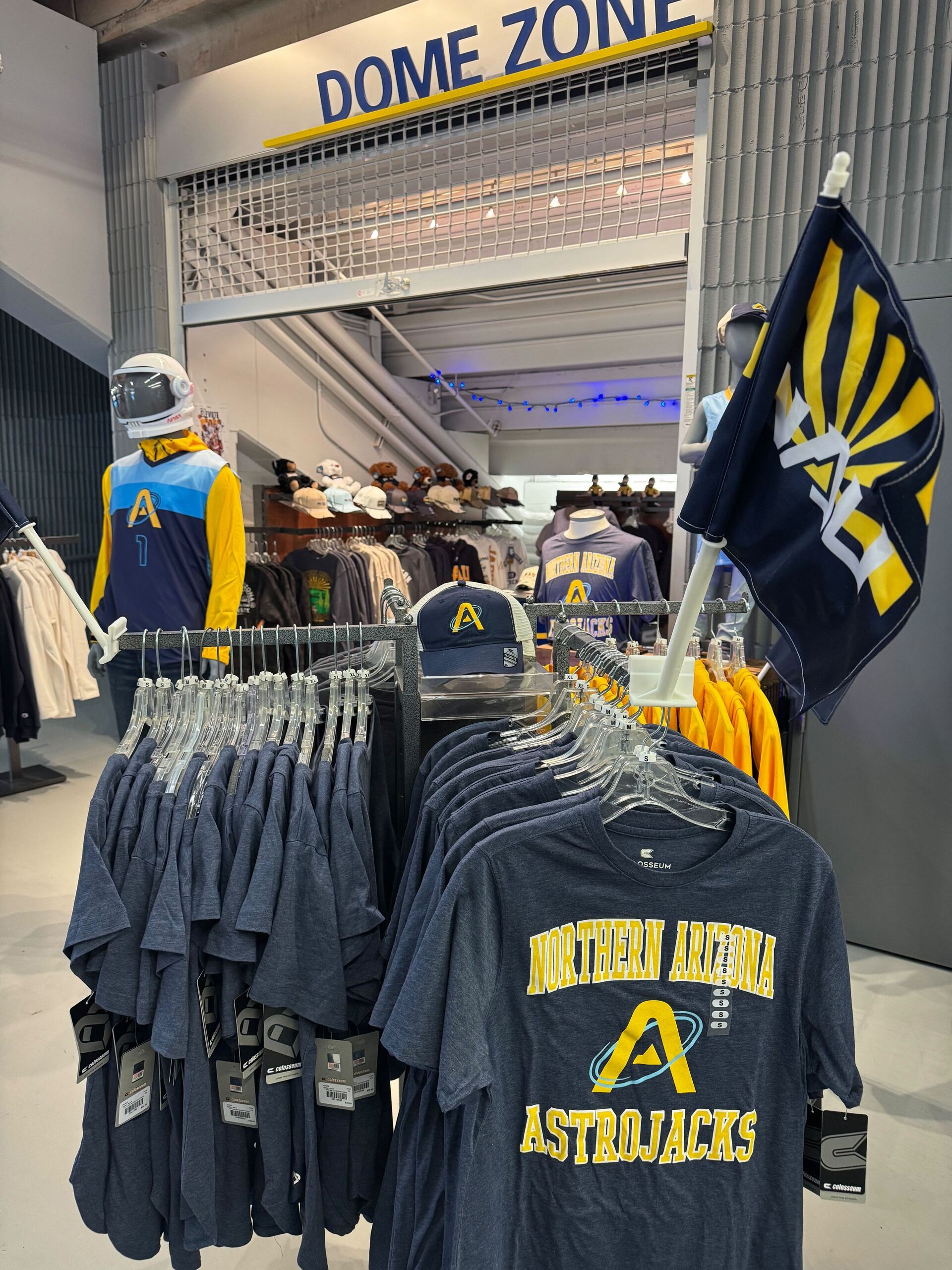Good morning, and thanks for your continued support of Extra Points.
This edition of Extra Points is brought to you in part by Gameday Grails:
Do I already own too much retro-inspired college athletic gear? Yes. It’s a source of actual contention in my household. Will I let that stop me from buying this sick looking Ohio State jacket? Maybe, maybe not. That depends on you.

If you beat me to it, I won’t be able to buy the jacket. You can find it, along with tons of other vintage professional and collegiate gear, over at GameDay Grails. The best vintage gear on Earth.
A few weeks ago, after a long day of meetings, interviews and various seminars at the NCAA Convention, I sat down at a table with several of my media colleagues. Over beverages and wings, we talked about where we thought the college sports industry was going, exciting stuff we were working on, and the sort of gossip that you’d expect from any group of colleagues gathering at an after-work watering hole.
But I remember we eventually settled on a question that really animated our table. Who is a good athletic director? And shoot, how do you even answer that question?
After all, us folks who actually cover the industry understand that what makes a “good” athletic director is a lot more complicated than just “make successful football and basketball coaching hires”, if they’re even the actual people leading those searches in the first place.
Is it fundraising and ribbon cutting? Is it thought leadership on various NCAA and Knight Commission panels? Is it about their ability to develop other ADs? Are we, as reporters, biased towards the handful of ADs who love answering our text messages and pretending that we’re funny?
The answer is all of the above, right? But even as college sports business and policy reporters, we become aware of only a tiny percentage of what actually happens in an athletic department. We all know about the proverbial “good” AD who wins all the industry press awards….and then goes down in scandal.
So I’m really conservative about answering that question. I welcome debate and input, but even as a guy who has way more ADs in his phone than football coaches, I worry that my gut reaction might be wrong, that I don’t have enough information, that I couldn’t comfortably say, in public, that I think this person is a really good AD.
But I have exceptions to that rule. BYU’s Tom Holmoe is one of those exceptions.
Earlier this week, Holmoe announced he’s retiring from BYU at the end of this school year. Holmoe had worked as BYU’s AD since 2005, a true anomaly in a world where ADs change gigs almost as often as coaches.
If we just want to look at the more traditional professional accomplishments, Holmoe’s influence would be right there with the most beloved ADs at just about any school. During his tenure, BYU not only navigated a challenging era as an FBS Independent, but he helped guide the department to its long-term goal, Power Conference Membership in the Big 12. BYU competed for and won national titles in Olympic sports, punched above its weight in the Director’s Cup, won industry praise for innovation in creative content, multimedia rights sales and fan experience, and much more. He was a NACDA Athletic Director of the Year and everything.
I also think it’s fair to point out all of this happened at BYU…which is a hard job. It’s a hard job because for much of Holmoe’s tenure, fan expectations did not really line up with department financial realities. It’s a hard job because BYU really is one of the rare national, if not international, brands in college athletics, but the one without all the entrenched advantages of Notre Dame, Ohio State or Texas.
It’s a hard job because BYU is a challenging academic institution, and one with a well-documented student honor code, dramatically shrinking BYU’s potential recruiting pool. And it’s a hard job because, as the flagship institution of the Church of Jesus Christ of Latter-Day Saints, the athletic director becomes visible in a way that, well, other ADs aren’t.
That he was able to pull all of that stuff off, at a place with a higher degree of difficulty, is truly commendable. That alone would be enough for most people to think, yeah, that’s a good AD.
But when I heard about the retirement, those weren’t the sort of things I thought about.
I know a lot of folks in the BYU-extended universe, because of my background. Over the course of my career, I’ve gotten to know a lot of folks who played at BYU while Tom was there, worked in the athletic department under Tom, got to know him in WCC or NCAA meetings, or who covered him as reporters.
To a man and to a woman, every single person I have ever met in a professional setting who knows or who has worked with Tom Holmoe has nothing but positive things to say. And while it isn’t hard to find somebody in college sports who will praise his judgment, his intellect, or his passion for Cougar sports, what you will generally hear the most is he is a good human being.
When I went out to Provo last Fall for a game, and spent time tailgating with beer drinkin’ Cougar fans…the kinds of folks who you might expect to have more complicated relationships with administrators with byu.edu email addresses? They loved Tom. Loved him. And when I talk to my more Straight and Narrow BYU graduate friends and family members? Same thing.
They love him because they all believe he cares about them and their needs. They love him because they trust him and believe he shares their values. I’ve heard a lot more stories about folks who point to Holmoe taking an interest in their families, their personal development and their health, more than just wins, losses, and sponsorship dollars.
I don’t claim to know Tom exceptionally well on a personal level. But I do think I know him well enough to know that he cared a lot about BYU athletics being successful on the field. But he cared even more about BYU athletes and BYU staffers being successful period. That environment means you can have a Mormon school with a Matzo-slingin’ quarterback, and with basketball players fasting for Ramadan during the NCAA Tournament. It means you have a department that is willing to do hard things in the service of greater values…a place where people want to be.
BYU isn’t perfect. But I think it’s difficult to argue it hasn’t been successful, on and off the field, over recent years.
Tom Holmoe is a major reason why. You don’t need me to tell you he was a good athletic director, but I will anyway. But I’ll also say that I think he’s a good dude. It’s easy to celebrate the career of a good dude, but it’s also a little sad. With this industry facing so much dramatic change, we don’t just need good fundraisers, good administrators and good identifiers of talent.
We need good human beings too.
Here’s what else we’ve been cooking on lately:
I caught up with the AD at Chicago State to better understand what kind of football coach the school wants to hire, where this football team is actually going to play, and what else is happening on the South Side.
Spring Football games may be an endangered species, but I don’t think it’s because of tampering. It’s because they don’t fit with the calendar anymore…and most of America doesn’t really care about them.
I checked in again on the conference realignment beat. Here’s what I’ve been hearing about a potential big move in D-II, the Big West, the Horizon, and more.
How does private equity actually fit….or not fit…with college sports? Why are school presidents continuing to take these calls?
And of course, we’ve also been cooking on the Extra Points Library:
Over the last few days, I’ve added several more contracts for various athlete recruiting software and vendor tools, along with over a dozen more FY24 itemized athletic department budgets, women’s basketball coaching contracts, shoe deals, and much more.
If you want to understand what schools spend on coaches or stuff, how one school’s budget stacks up with another, or how the biggest contracts in college sports actually works, you want Extra Points Library. The data you need to make the best decisions, today.
And finally, here’s a random YouTube Video that I’m including to goose our email engagement numbers:
One summer, I played this song so many times that my wife nearly threw my computer out of our hotel balcony. Do I have regrets? NOPE. WORTH IT.
Thanks for reading. I’ll see you on the internet tomorrow.


















